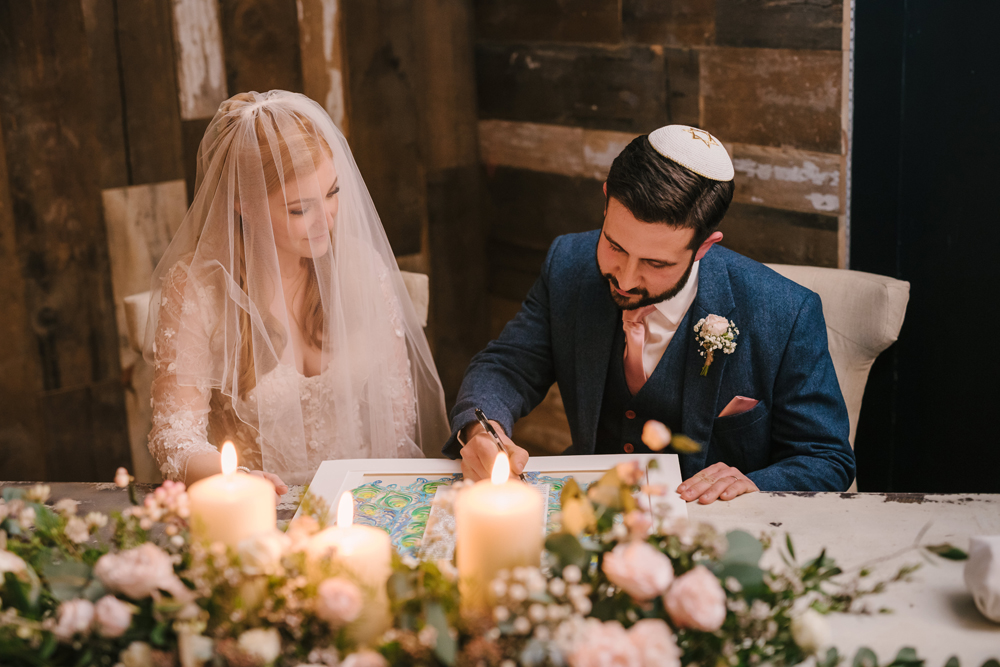This comprehensive guide 'Ketubah FAQs: Answering Common Questions' aims to demystify the complexities associated with the Jewish marriage contract, the Ketubah. From its historical origins, to its contemporary relevance and significance, we answer a wide array of questions to guide you through this essential part of the Jewish wedding ceremony.
What is a Ketubah?
A Ketubah is a traditional Jewish marriage contract that outlines the rights and responsibilities of the bride and groom in a marriage. It is a significant and meaningful document that has been used for centuries in Jewish weddings. The Ketubah is more than just a legal document; it is a symbol of the couple's commitment to each other and their shared values. In addition to detailing the financial obligations of the groom towards the bride, the Ketubah also includes provisions for the emotional and spiritual well-being of both partners. The Ketubah is often beautifully decorated and displayed in the couple's home as a reminder of their vows and promises to each other.
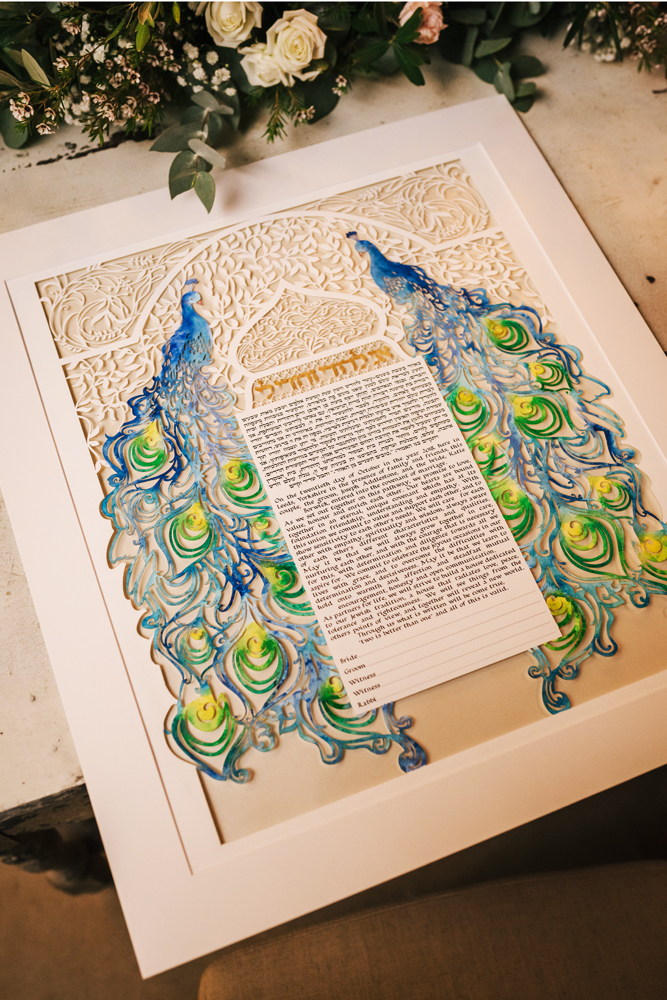
An image of Ketubah highlighting the intricate artwork.
Why is a Ketubah necessary?
A Ketubah is necessary because it serves as a tangible representation of the marital agreement between the bride and groom. It outlines not only the legal obligations but also the emotional and spiritual commitments that the couple is making to each other. The Ketubah helps to establish a framework for the marriage, setting forth expectations and responsibilities that both partners agree to uphold. By signing the Ketubah, the couple publicly declares their intentions and promises to each other, providing a solid foundation for their union. Furthermore, the Ketubah acts as a legal document that can be referred to in case of any disputes or misunderstandings in the future. It serves as a testament to the couple's bond and commitment, serving as a source of strength and unity throughout their marriage.
'The Artistry in a Ketubah': How is a Ketubah designed?
A Ketubah is designed with meticulous attention to detail and personalization to reflect the unique essence of the couple. Artists and calligraphers collaborate to create a beautifully crafted document that captures the couple's individuality and the significance of their union. The design process often begins with a consultation to understand the couple's preferences, style, and cultural background, ensuring that the Ketubah resonates with their values and beliefs.
Utilizing a combination of traditional and modern techniques, the Ketubah is adorned with intricate motifs, symbols, and colors that hold special meaning to the couple. From elegant floral patterns to meaningful quotes or verses, each element is carefully chosen to enhance the visual appeal and emotional depth of the Ketubah.
The text of the Ketubah is skillfully integrated into the design, blending seamlessly with the artistic elements to create a harmonious composition. Whether it is hand-painted, digitally printed, or a combination of both, the craftsmanship and artistry involved in creating a Ketubah make it a cherished piece of artwork that symbolizes the couple's commitment and love.
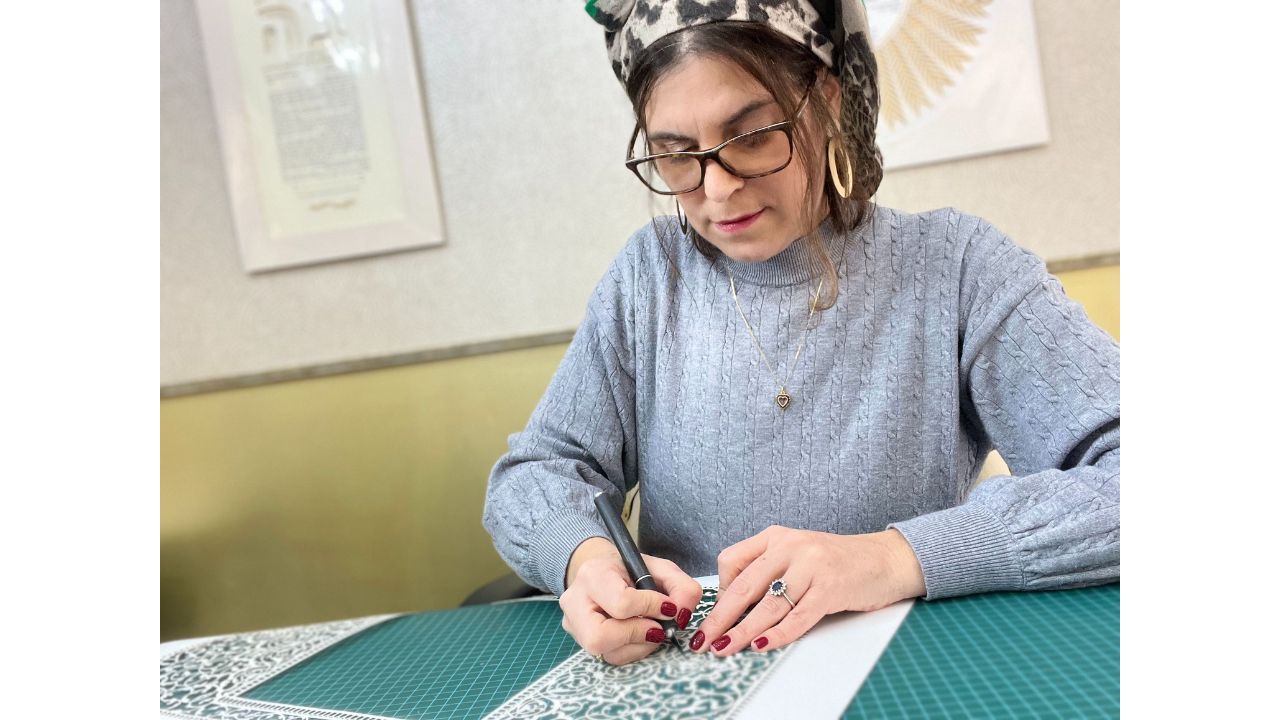
An showing the process of designing a Ketubah.
How is the text of the Ketubah determined?
The text of the Ketubah is a vital component that outlines the couple's promises, commitments, and responsibilities to each other. It is traditionally written in Aramaic, the language of the Talmud, but can also be translated into English or other languages based on the couple's preferences. The content of the Ketubah typically includes declarations of love, loyalty, and mutual respect, as well as specific obligations that the couple undertakes in their marriage.
Before finalizing the text, the couple often works closely with a rabbi, officiant, or religious authority to ensure that the wording aligns with their beliefs and values. They may also have the option to customize certain sections of the text to reflect their personal relationship and aspirations for the future. In some cases, couples choose to incorporate modern language or poetry into the Ketubah to add a contemporary touch while preserving the traditional essence of the document.
Can a Ketubah be personalized?
Yes, a Ketubah can be personalized to reflect the unique personality, style, and preferences of the couple. Personalizing a Ketubah allows couples to make the document truly their own, incorporating elements that hold special meaning to them and enhancing its significance as a representation of their union.
- 1. **Design and Artwork**:
One way to personalize a Ketubah is through its design and artwork. Couples can choose from a wide range of designs, styles, and themes to find one that resonates with them. Whether they prefer traditional motifs, modern graphics, or custom illustrations, the design of the Ketubah can be tailored to reflect the couple's aesthetic tastes and cultural background. - 2. **Custom Text**:
In addition to the design, the text of the Ketubah can also be personalized. Couples have the option to work with a calligrapher or artist to create a custom text that captures their unique relationship and values. This may involve incorporating personal vows, quotes, or poems that hold special significance to the couple, adding an extra layer of intimacy and meaning to the document.
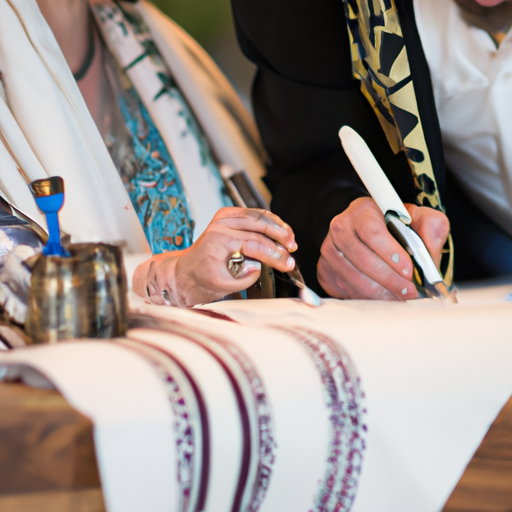
A picture of a couple personalizing their Ketubah with a calligrapher.
Who signs the Ketubah?
In a traditional Jewish wedding ceremony, the Ketubah is signed by two witnesses who are not blood relatives of the couple. These witnesses are typically chosen for their integrity and upstanding character, as they are attesting to the validity of the marriage contract.
The signatures of the witnesses on the Ketubah hold legal significance, as they serve as a testament to the fulfillment of the document's requirements.
After the witnesses have signed the Ketubah, the document is then signed by the couple getting married, affirming their acceptance of the terms outlined in the contract.
After the wedding: What happens to the Ketubah?
After the wedding, the Ketubah is typically displayed prominently in the couple's home as a symbol of their commitment to each other. It serves as a beautiful reminder of the vows they made to each other on their wedding day.
Some couples choose to frame their Ketubah and hang it in a special place, such as their bedroom or living room, as a daily affirmation of their love and partnership.
Others may opt to store their Ketubah in a safe place, such as a protective tube or folder, to preserve it for future generations. This ensures that the Ketubah remains intact and can be passed down as a cherished family heirloom.
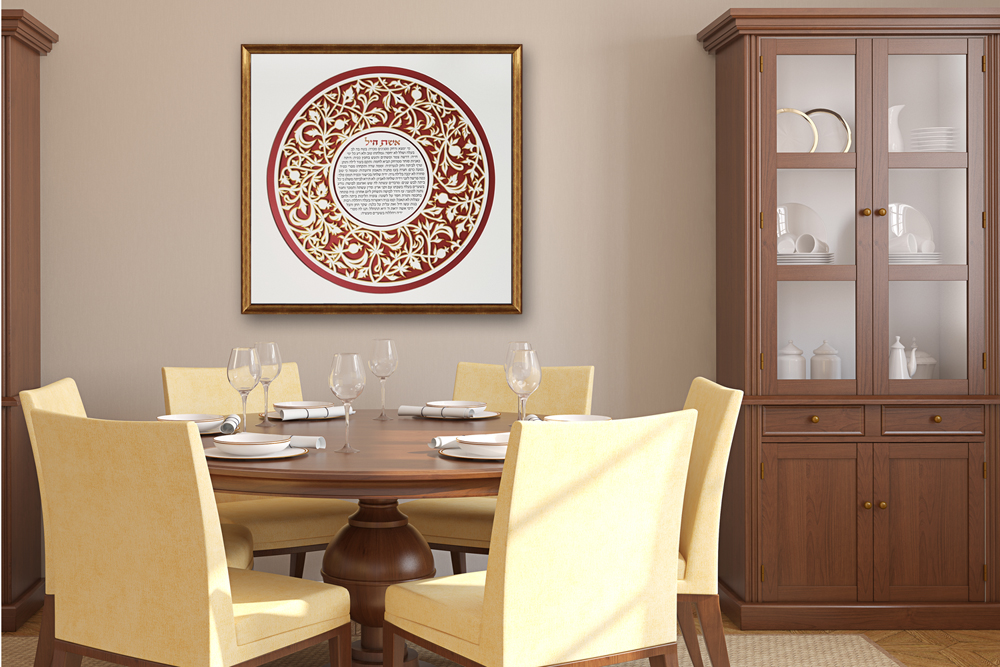
An image depicting a beautifully framed Ketubah displayed in a home.
After delving into the multifaceted world of the Ketubah, we hope that this guide has answered all your questions and equipped you with the knowledge to appreciate this ancient tradition. We believe that understanding the Ketubah is a key step towards appreciating the profound beauty of the Jewish wedding ceremony.
https://noaattias.com
אין באמור להוות משום המלצה או ייעוץ מקצועי – לפני ביצוע כל פעולה יש להתייעץ באופן פרסונלי ופרטני עם מומחה מוסמך
